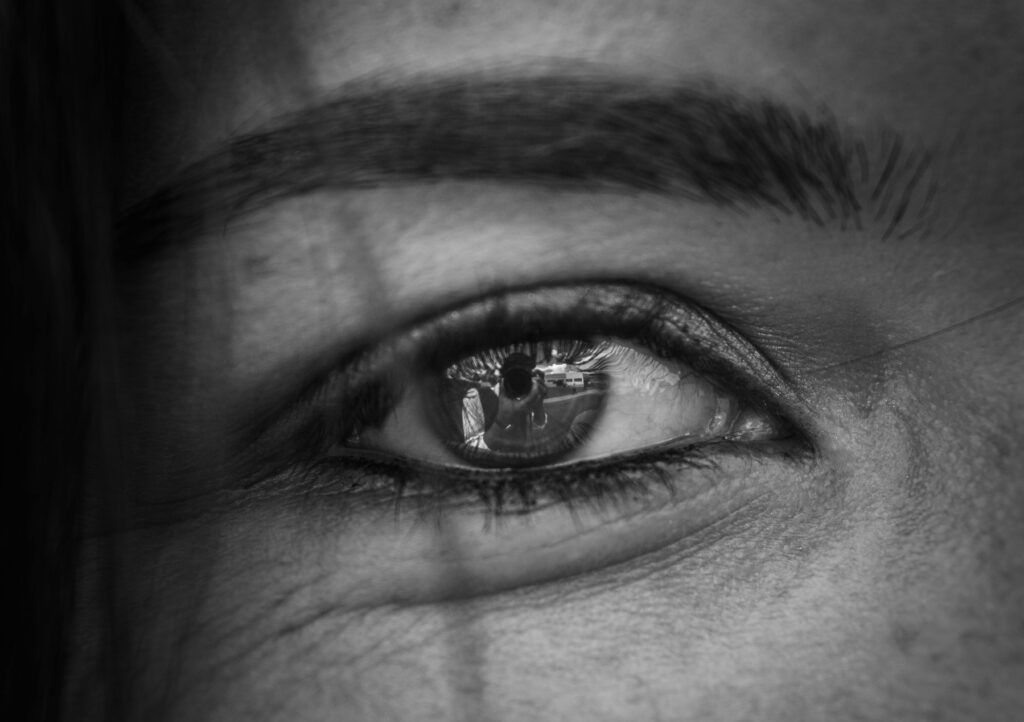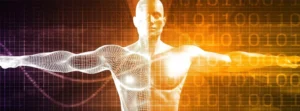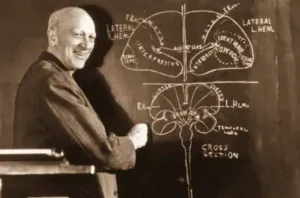What does science tell us about the soul?
Exploring the relationship between the mind and the brain through philosophy, materialism and quantum mechanics

The classical conception of consciousness
Consciousness is the state of self-knowledge, it allows us to realize our own existence and everything that happens around us. It is the melody that remains engraved in our heads or the aroma of the field after the rain. The origin and nature of these experiences have been a mystery since the early days of antiquity and the subject of the most varied philosophical or scientific theories.
Plato believed that there had to be realities that existed apart from the material world, which he called “the forms.” And that in human beings there is a capacity to apprehend these forms, the soul or mind. He defined consciousness as the soul’s relationship with itself. For Aristotle, in the compound of body (matter) and soul (form) that is the living being, this is what completes and perfects it: “the soul neither exists without a body nor is it in itself a body.”[ 1]For centuries, in classical metaphysics, the idea of the existence of a soul remained, until the emergence of mechanistic materialism in the 17th and 18th centuries modified the approach to understanding the world and ourselves.
The materialist conception
In its current conception, materialism advocates that mental states are identical to brain states and that our thoughts and feelings and our sense of self are properties of electrochemical activity in the brain. This is what Francis Crick, co-discoverer of the structure of DNA, says: “You, your joys and your sorrows, your memories and your ambitions, your sense of personal identity and free will, are in reality nothing more than the behavior of a vast set of nerve cells and their associated molecules”[2].
But how is it possible for a bunch of particles devoid of consciousness to come together and cause consciousness? Defenders of materialism propose different explanations. One proposed solution is to consider it an illusion; This doesn’t actually solve the problem, it simply denies its existence. Others consider consciousness an emergent property, arising from the simple interconnection of 86 billion neurons; but it is not explained from what degree of complexity this consciousness is achieved. There are other explanations from the field of materialism, but they all fail to consider nature as a machine, a vision inherited from Newtonian physics, and, therefore, they cannot see that feelings, along with all aspects of inner life, They are the foundations of human life, not the chemical and electrical activity of the brain. The lack of an adequate explanation has meant that throughout the 20th century the materialist vision has gradually lost support. Charles Sherrington, founder of modern neuroscience, sums it up this way: physics and chemistry “take us to the threshold of the act of perceiving, and there they say goodbye”[3].
 Quantum behavior points to a change of direction
Quantum behavior points to a change of direction
The 20th century has brought about a paradigm shift for the brain-mind problem. Previously, all ideas generated and discussed were purely theoretical speculations. Very little was known about the functioning of the brain and Newtonian mechanics is incompetent to explain how the brain is capable of generating unobservable conscious experiences. All speculations moved in the field of philosophy. However, the last century has seen important achievements in neuroscience, and quantum mechanics has revealed the behavior of matter at its most elementary levels, allowing a collaborative approach between science and philosophy to understand the mind.
Experimental research has opened new avenues that allow us to better understand the nature and characteristics of this relationship between the brain and the mind. Different types of research seem to indicate the existence of a mind or soul independent of the brain and, in general, of the human body itself. These include observations of brain behavior reported by neurosurgeons, the analysis of Near Death Experiences, known by their acronym NDE, analyzes of Terminal Lucidity or intelligence studies in hydrocephalic patients. It should be said that many of the most prominent neuroscientists of the 20th century, among others, Charles Sherrington, Ramón y Cajal, Wilder Penfield, Benjamin Libet, Roger Sperry and John Eccles, have been dualists, that is, they have perceived a differential character and a differentiated existence. of the mind with respect to the brain.
Observations of brain behavior by neuroscientists
There are numerous neuroscientists whose experiences have led them to conclude that there is something in human beings that goes beyond matter. As an original and outstanding example, we should refer to Wilder Penfield. The experience of this neurosurgeon, a pioneer in callosotomy for epileptic patients, has to do with the observations of numerous patients treated throughout his long career.

Professional life. The brain does not experience pain, so a neurosurgery patient can remain comfortably conscious with only local anesthesia. The surgeon can then communicate with the patient to make sure the treatment is not harming speech or movement.
First, he realized something about the seizures. It could cause seizures by stimulating the brain. The patient could shake his arm, feel tingling, see flashes of light or even have memories. But what he could never do was cause an intellectual seizure: the patient never reasoned when his brain was stimulated.
Second, Penfield observed that patients always knew that the movement or sensation caused by brain stimulation was made to them, but not by them. There was a part of the patient, the will, that Penfield couldn’t reach with his electrode. So he came to the conclusion that intellect and will do not come from the brain [4].
Near Death Experiences (NDEs)
After a heart attack, drowning, or major trauma, people often suffer from a severe lack of oxygen, which causes a gradual reduction in electrical activity in the brain and results in a “switch off” of higher brain functioning. , as well as most lower brain functions, a phenomenon characterized by a flat electroencephalogram.
Since the 1960s, advances in resuscitation have helped revive millions of people after their hearts have stopped. “These survivors have described a unique set of memories in relation to death that seem universal.”[5] This is the statement contained in the article signed by 18 researchers belonging to 13 different institutions, universities and large hospitals, in the United States and Great Britain, published in the Annals of the New York Academy of Sciences.
A growing number of researchers began collecting qualitative data and researching NDEs following the publication in 1975 of psychiatrist and physician Raymond A. Moody’s book Life After Life, which detailed accounts of patients with near-death experiences, coining the term term by which these studies have since been known.
To describe the generic case, the first thing that must be insisted on is that these are people who at that moment suffer clinical death, with a flat encephalogram, without brain stem function, without electrical activity in the cerebral cortex or elementary functions such as response of the pupil to light, arising from the brainstem. That is, all brain functions have come to an end. This means that the patient cannot think, see, recall past memories, or remember new data. But after the “resuscitation” process, they say that in those moments their consciousness has left their physical body (like a spirit or soul), and that this soul has the ability to think, see, hear, remember and move, without being limited. by physical laws.
The systematic studies carried out by renowned universities and clinical hospitals throughout the world define a series of common characteristics of the phenomena experienced individually by the thousands of people analyzed. Patients who do not have significant brain functions report being able to think, see, remember and move. The assessments of people who have experienced an NDE are very diverse, and therefore, to systematize the research, it has been proposed to classify them into 50 different themes.[6]But for the understanding of the mind-brain relationship that we discuss here, two characteristics highlighted by these patients are important: the out-of-body experience, the perception that one is outside one’s own body, as well as experiencing both precise visual and auditory perception. Because this suggests that the mind or soul turns out to be something that is related to the brain or the body, but not through any mechanical, chemical or electrical means.
Terminal Lucidity Studies
For the past 250 years, doctors have intermittently documented an unusual increase in mental clarity in the final minutes, hours, or days before a patient’s death. Among the many cases described are patients with severe neurological disorders (such as advanced Alzheimer’s, advanced dementia and severe neurological damage from stroke), with almost no cognitive ability attributable to brain function, who suddenly awaken to consciousness and significant cognitive activity before die.
 A well-known example is explained by Ted Christopher[7] as follows: “Perhaps the most striking case was that of a severely disabled young woman named Anna (“Kathe”) Katherina Ehmer. Her case occurred in 1922 and had substantial verification, since Kathe was a patient at a psychiatric hospital and her episode of sudden lucidity was observed by the hospital’s chief physician, Wilhem Wittneben, and also by its director, Friedrich Happich. . Kathe had been born with severe disabilities and, as such, had never spoken and, furthermore, seemed alien to her surroundings. However, in the last half hour of her life, she apparently sang and, in particular, the repeated phrase: “Where does the soul find her home, her peace?” Peace, peace, heavenly peace.” Most cases are not so striking, but they hide the same mystery, they seem to indicate a consciousness beyond the brain. A typical example referred to in the same article cited: “The case referred to an elderly woman who had been experiencing such cognitive impairment for years that she “did not show signs of recognizing her daughter or anyone.” However, in the moments before her death, she “engaged in a normal conversation with her daughter.” The daughter was surprised and she was “totally confused.”[8]
A well-known example is explained by Ted Christopher[7] as follows: “Perhaps the most striking case was that of a severely disabled young woman named Anna (“Kathe”) Katherina Ehmer. Her case occurred in 1922 and had substantial verification, since Kathe was a patient at a psychiatric hospital and her episode of sudden lucidity was observed by the hospital’s chief physician, Wilhem Wittneben, and also by its director, Friedrich Happich. . Kathe had been born with severe disabilities and, as such, had never spoken and, furthermore, seemed alien to her surroundings. However, in the last half hour of her life, she apparently sang and, in particular, the repeated phrase: “Where does the soul find her home, her peace?” Peace, peace, heavenly peace.” Most cases are not so striking, but they hide the same mystery, they seem to indicate a consciousness beyond the brain. A typical example referred to in the same article cited: “The case referred to an elderly woman who had been experiencing such cognitive impairment for years that she “did not show signs of recognizing her daughter or anyone.” However, in the moments before her death, she “engaged in a normal conversation with her daughter.” The daughter was surprised and she was “totally confused.”[8]
Although there are still no studies on the incidence at a universal level, it can be assured that it is a relatively frequent phenomenon, as stated by all the researchers who have dealt with this topic. We can intuit the frequency of this phenomenon from a study carried out by researchers from the teaching hospitals of Dongguk and Gyeongju universities in South Korea published in 2018[9]: “Of the 338 deaths that occurred during the period of study (187 in the ICU and 151 in the general wards), terminal lucidity was identified in 6 cases in the general wards. The periods of lucidity ranged from several hours to 4 days.” If we extend this percentage to the more than 55 million people who suffer from dementia around the world, according to figures from the World Health Organization[10], we understand that we are facing a phenomenon that is repeated millions of times.
German biologist Michael Nahm, who coined the term “terminal lucidity,” believes there are preliminary signs that our minds somehow transcend our bodies, brains, and even the physical realm entirely: “When you see terminal lucidity in the context of all other end-of-life experiences or near-death phenomena, all seem to point to the fact that human consciousness is not tied to a one-to-one relationship with the physiology of the brain.”[11]
Intelligence studies in hydrocephalic patients
Hydrocephalus is a disease in which cerebrospinal fluid replaces brain tissue in vital parts of the brain necessary for cognitive function. In 1980, British pediatrician John Lorber reported that some normal adults, apparently cured of childhood hydrocephalus, had no more than 5% of the volume of normal brain tissue. This extreme case occurred in 60 of the 600 cases studied by Lorber. However, these were mysteriously normal children: they ate, drank, played, studied, and even excelled in class. Even one of the children, with an extremely small brain of 5 mm, had a higher than normal IQ. This reality refutes all existing theories about the brain. Faced with this reality, a large part of neurologists limit themselves to the opinion that we must modify our conception of how the brain works. This is how University of Sheffield neurologist Adrian Bower puts it: “There are still many unanswered questions about the human brain, and it must be admitted that Lorber’s provocative approach makes us think about them.”[12]Other scientists, such as biochemist Donald R. Forsdyke of Queen’s University, face this evidence and point in a new direction: “The brain [is] like a receiver/transmitter of some form of electromagnetic wave/particle… of course, when talking about extracorporeal memory, we enter the domain of the “mind” or the “spirit”, with the corresponding metaphysical implications.”[13]
In search of the physical explanation
A brain is aware of an object when a physical representation (neural correlate) of that object exists in its memory along with its “meaning.” In classical physics, there is no mechanism capable of explaining how the brain generates the unobservable inner psychological world of conscious experiences and how, in turn, those conscious experiences direct the underlying brain processes toward the desired behavior. One of the unanswered questions is: how can a mental phenomenon that has no energy source give rise to a phenomenon that depends on energy?
 But with quantum physical laws that deal with unobservable quantum information it does seem that the existence of the mind and its relationship with the brain can be explained. Very different theories have been proposed based on these laws, with the one proposed by Bohm and Hiley being the one that we understand best responds to all the characteristics that we know empirically about the mind-brain relationship.
But with quantum physical laws that deal with unobservable quantum information it does seem that the existence of the mind and its relationship with the brain can be explained. Very different theories have been proposed based on these laws, with the one proposed by Bohm and Hiley being the one that we understand best responds to all the characteristics that we know empirically about the mind-brain relationship.
David Bohm’s explanation is based on quantum mechanics (QM), on Louis de Broglie’s “pilot wave” interpretation, in which he introduces new ideas that imply a radically different vision of nature, without making any empirical difference. .
Matter, and also the matter of the brain, is made up of particles that we know are made up of quantum fields, which interact in space-time. Bohm postulates that a particle is always a particle and a field at the same time. It is a new type of field present throughout the universe that contains what he calls active information, the source of which is a new quality of energy, which literally informs the particle. This new quality of energy[14] is part of the essence of mental states, allowing us to understand how mental states can influence physical processes.
What Bohm proposes, in the words of Robert Spitzer, is: “to conceive of matter not as a substance completely distinct from the mind (the soul), but rather as constituted by quantum fields intrinsic to particles, influenced by the gravitational effects of space.” -time, and conceive of quantum fields as basic carriers of information fields that can influence particles and higher levels of information fields and physical systems.”[15]
Human thought and choice affects intrinsic quantum fields, the elementary particles in the brain (and, through the brain, the rest of the body). Consciousness emerges as an infinite sequence of quantum potentials at successive levels, each of which controls the one below.
This mechanism by which individual consciousness can be abstracted from an underlying “ground” of consciousness constitutes an explanation of the mind-brain relationship that determines free and conscious rational choice and satisfies experimental observations that point to a mind or soul outside the field of classical physics.
Furthermore, as Hiley and Pylkkänen explain: “By claiming that information exists objectively (independently of the human mind) and plays an active organizing role at different levels of nature, we are proposing that we radically change our view of the world[16]. Instead of saying that everything is fundamentally matter and energy, we follow Bohm in suggesting that reality is a process that has two sides, a somatic, material/energetic one, and a meaningful, meaningful one.”[17]
One hundred years after the discovery of the quantum world, we see how little by little quantum mechanics is allowing us to get closer to the knowledge of reality. The explanation of consciousness is surely the greatest enigma that humanity has always faced. What has been called the ontological interpretation of David Bohm’s quantum theory, which began in 1952, allows an explanation in general terms of how the mind or soul can interact with the brain and in general with the human body. Through the counterintuitive laws that emanate from the quantum world we can understand the integrated mind-body hierarchy.
But what may seem to us a surprising approach of science to the reality of the mind or soul, it is certain that it would not constitute any surprise to Aristotle or Thomas Aquinas.
Manuel Ribes – Life Sciences Institute – Bioethics Observatory – Catholic University of Valencia
***
[1] GARCÍA ALANDETE, J. Of the soul and the intellect in Aristotle’s De Anima – Philosophical Studies, 63 (182), 23–45. (original published on 03/16/2021)
[2] George Stanciu Materialism: The False God of Modern Science – The Imaginative Conservative 03/1/2023
[3] Ibid.
[4] Michael Egnor Science and the Soul – Plow 08/20/2018
[5] PARNIA, Sam, et al.Guidelines and standards for the study of death and recalled experiences of death – a multidisciplinary consensus statement and proposed future directions.Annals of the New York Academy of Sciences, 2022, vol. 1511, no. 1, p. 5-21.
[6] Ibid.
[7] Christopher, T. (2022) Dualism 101: Terminal Lucidity and an Explanation.Open Journal of Philosophy, 12, 687-700. doi: 10.4236/ojpp.2022.124047
[8] Ibid.
[9] Lim, C. Y., Park, J. Y., Kim, D. Y., Yoo, K. D., Kim, H. J., Kim, Y., & Shin, S. J. (2020). Terminal lucidity in the teaching hospital setting.Death Studies, 44(5), 285–291.https://doi.org/10.1080/07481187.2018.1541943
[10] World Health Organization Dementia 03/15/2023
[11] Zaron Burnett III Terminal Lucidity: The Researchers Attempting to Prove Your Mind Lives On Even After You Die MEL Magazine 09/26/2018
[12] Roger Lewin Is Your Brain Really Necessary?Science 210, 1232-1234 (1980). DOI: 10.1126/science.7434023
[13] Neuroskeptic “Is Your Brain Really Necessary?”, Revisited Discover Magazine 07/26/2015
[14] Quantum potential is the source of active information, but ultimately its source is a new quality of energy, which is not present in the classical realm. The appearance of another quality of energy should not surprise us. In thermodynamics we have many notions of energy: internal energy, Helmholtz free energy, Gibbs free energy and even thermal energy, all of which arise in general chemical processes; in this case, it arises from brain processes. The advantage of this new quality of energy is that it is “borrowed” from kinetic energy to shape the overall process, but in such a way that the energy is always conserved.
[15] Fr. Robert Spitzer, S.J Science at the Doorstep to God Ignatius Press September 11, 2023 ISBN/UPC: 9781621646365
[16] M.Ribes Information, a new paradigm?UCV Bioethics Observatory January 26, 2024 https://www.observatoriobioetica.org/2024/01/informacion-un-nuevo-paradigma/10000126
[17] Hiley, Basil J., and Paavo Pylkkänen, ‘Can Quantum Mechanics Solve the Hard Problem of Consciousness?’, in Shan Gao (ed.), Consciousness and Quantum Mechanics (New York, 2022; online edn, Oxford Academic, 20 Oct. 2022), https://doi.org/10.1093/oso/9780197501665.003.0016
Related

Evangelization and personal testimony
HM Televisión
07 March, 2025
2 min

The Wealth of the Heart and the Word
Luis Herrera Campo
07 March, 2025
2 min

European Day of the Righteous: Over 2,000 Sisters Rescued Jews
Heschel Centre for Catholic-Jewish Relations at the Catholic University of Lublin
06 March, 2025
3 min

Pope at Gemelli: Quiet night for the Pope
Exaudi Staff
06 March, 2025
1 min
 (EN)
(EN)
 (ES)
(ES)
 (IT)
(IT)

